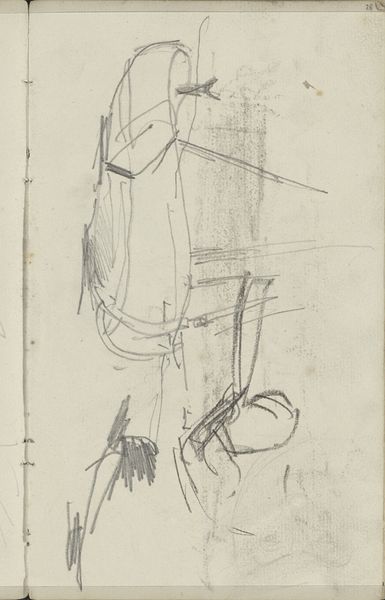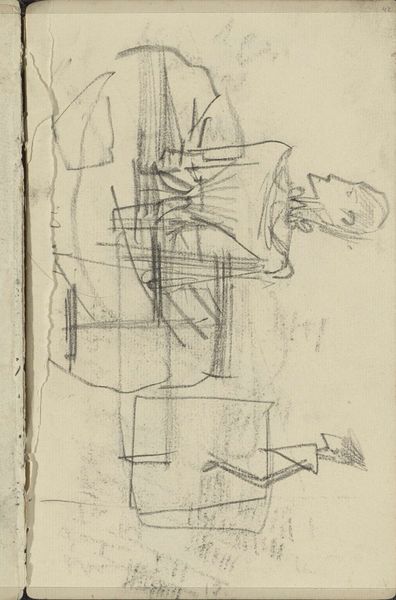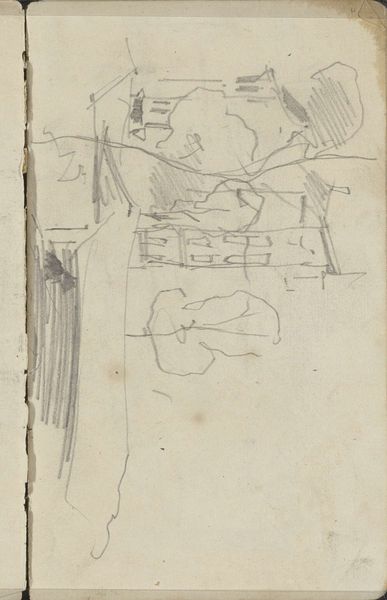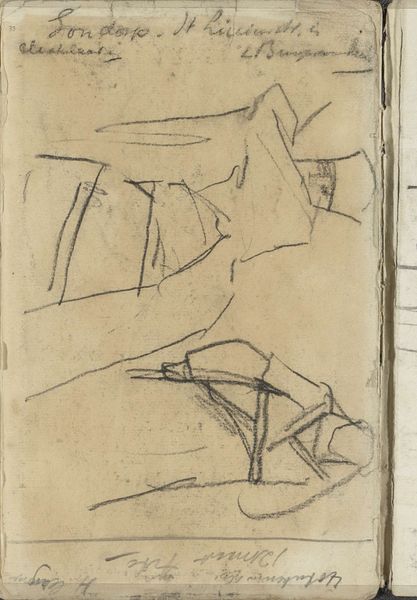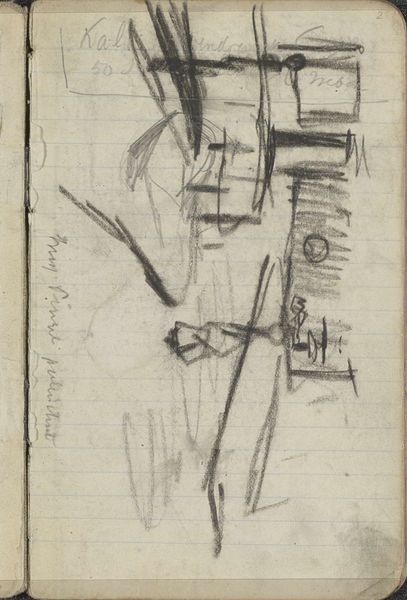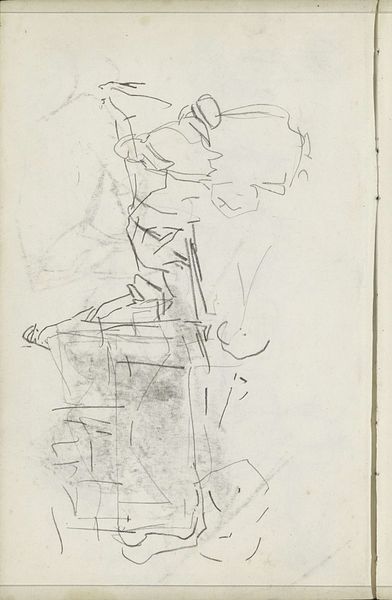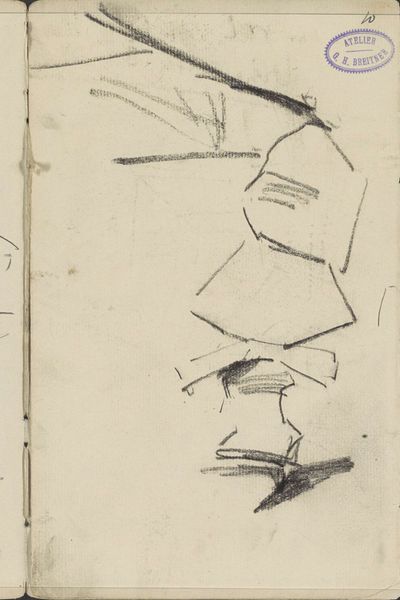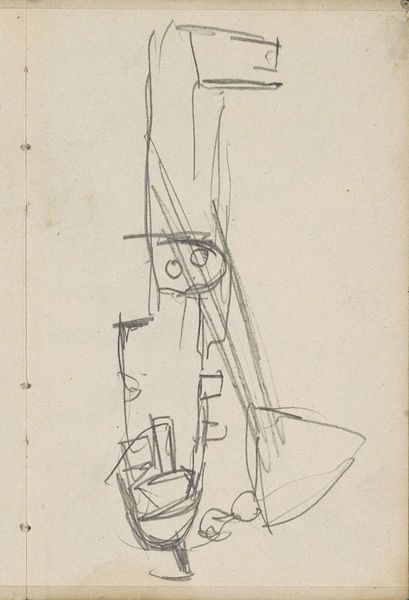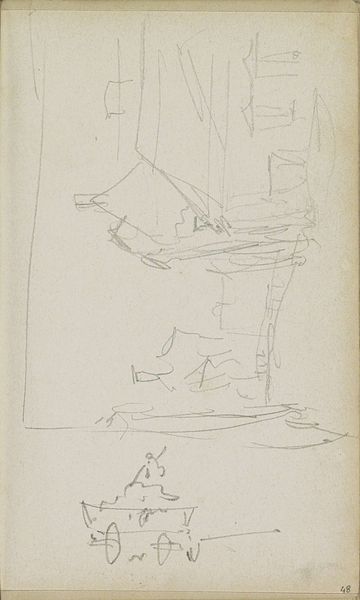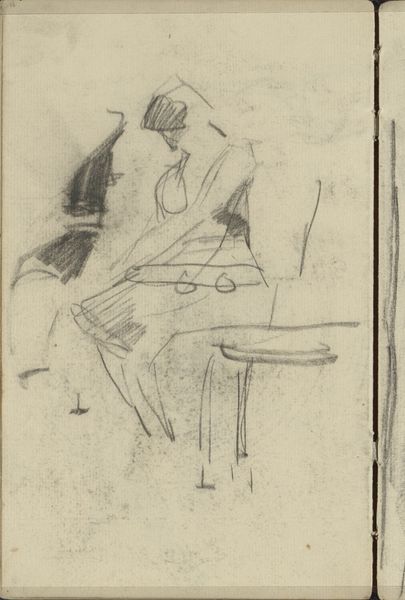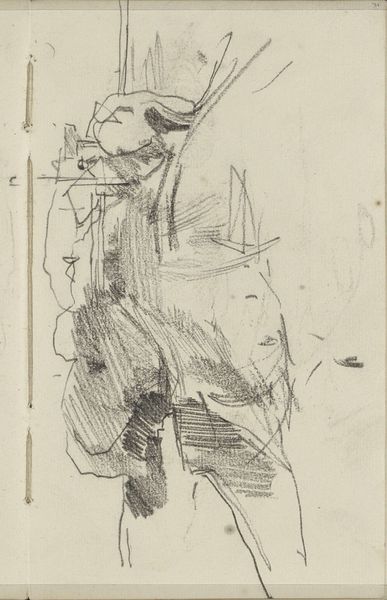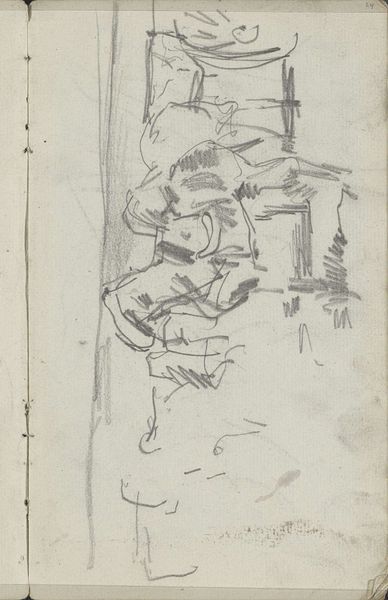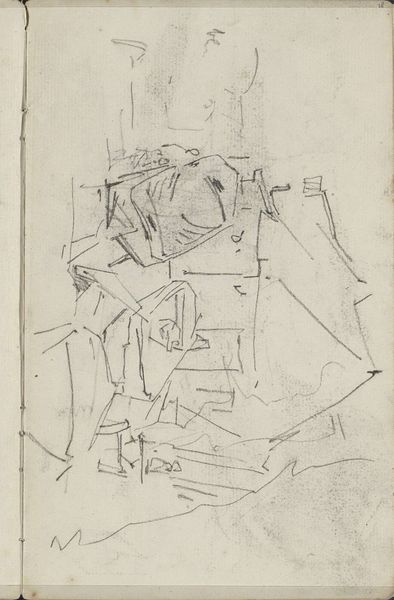
drawing, paper, pencil
#
drawing
#
landscape
#
paper
#
pencil
#
horse
#
line
Copyright: Rijks Museum: Open Domain
Editor: This is "Paard-en-wagen," or "Horse and Wagon," a pencil drawing on paper by George Hendrik Breitner, probably from around 1881 to 1883. It's very sketchy and raw; what’s your interpretation of this piece? Curator: Well, immediately, the rough quality speaks volumes. Look at the haste in those lines, almost frantic. Consider Breitner's Amsterdam—a city in the throes of industrialization. This isn't some romantic depiction of rural life. Editor: So you think the sketchiness reflects the speed of change at that time? Curator: Precisely. The fleeting image, quickly captured, mirrored the accelerating pace of urban existence. The drawing becomes a document of labor, of the materials being transported, maybe for building or commerce. It emphasizes the social context, showing the role of animals in early capitalist transportation. What kind of paper is this drawn on? Is it cheap, readily available newsprint, meant to be discarded? Or something more precious, meant to last? Editor: That’s interesting, I hadn't thought about the quality of the paper itself holding significance. I guess I was focused on the image, and less so on what the image was drawn *on*. Curator: The material reality of art-making always provides insight. By examining the materials, the labor involved, and its intended function, we understand it in its social and historical context. The pencil, the paper, Breitner's hand, and the horse, are all implicated in this rapidly modernizing world. Editor: I see your point. It really makes me think about the artist’s intentions and the economic factors at play when they chose to create in that way. Thanks for that perspective! Curator: And thank you. Looking closely at the materiality of art offers such a valuable window onto history.
Comments
No comments
Be the first to comment and join the conversation on the ultimate creative platform.
